
What more appropriate day for an article on creation than Mother’s Day? After all, it is a mother’s act of creating new little humans that has given us the human race. And in that act of creation is born the other half of our most fundamental reason for existence: connection. These two pieces are the core of the philosophy I call Heartflow – creation and connection. These two primal drives give our life meaning. I see them as the yang and yin energies of the human consciousness. The effort to get these two energies to intertwine and work together positively forms the basis of what I call growing up.
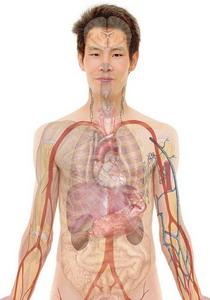 A lot of my philosophy is rooted in physiology. The structure of the human body and how everything works together to produce health is a model for how we can function and grow in the larger world. Conflicts within our physiology are also reflected in the challenges we face in our outer lives. One such conflict is experienced in the design of our brain, with two halves that function so very differently. Likewise, our body’s autonomic functioning is controlled by two opposite nervous systems: the sympathetic and the parasympathetic. In truth, almost everything in our body is about the actions of two different and opposed systems or processes working to find a harmonious balance. Health is that sweet spot where the systems meet in the middle and create health through a balance in the opposing forces. This is the Goldilocks zone I have written about many times, where the body needs to function correctly.
A lot of my philosophy is rooted in physiology. The structure of the human body and how everything works together to produce health is a model for how we can function and grow in the larger world. Conflicts within our physiology are also reflected in the challenges we face in our outer lives. One such conflict is experienced in the design of our brain, with two halves that function so very differently. Likewise, our body’s autonomic functioning is controlled by two opposite nervous systems: the sympathetic and the parasympathetic. In truth, almost everything in our body is about the actions of two different and opposed systems or processes working to find a harmonious balance. Health is that sweet spot where the systems meet in the middle and create health through a balance in the opposing forces. This is the Goldilocks zone I have written about many times, where the body needs to function correctly.
 My deep appreciation of this balance of opposites creating harmony and health naturally translated to how I perceive we relate to life. In a simplified form, I see our right brain as seeking connection in life and our left brain as seeking to create our way. Since everyone is somewhat unique and has their way of interacting with life, connections are always in ways different than our creation flow is comfortable with. Pursuing our way results in us pushing such differences away, which leaves us alone. However, we can only successfully create our way in the world with the participation of other people. For example, what would getting our way even mean if we were stranded alone on a tropical island? The ocean, the wind, the sun, and the trees don’t care about what we want or what our way is. Our way has no meaning.
My deep appreciation of this balance of opposites creating harmony and health naturally translated to how I perceive we relate to life. In a simplified form, I see our right brain as seeking connection in life and our left brain as seeking to create our way. Since everyone is somewhat unique and has their way of interacting with life, connections are always in ways different than our creation flow is comfortable with. Pursuing our way results in us pushing such differences away, which leaves us alone. However, we can only successfully create our way in the world with the participation of other people. For example, what would getting our way even mean if we were stranded alone on a tropical island? The ocean, the wind, the sun, and the trees don’t care about what we want or what our way is. Our way has no meaning.
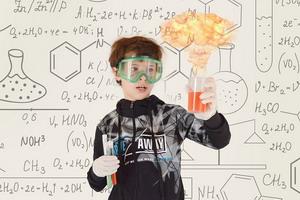 So we are left with the problem that defines most of our life – how do we create a life that is what we want, that is somewhat our way, while also participating with other people and their different wants and ways? How we handle this becomes our life story. This is why I love philosophy; it explores how we can do this better. My philosophy is also science-based, which is all about trial and error. Most people don’t realize that trial and error is all science is. Science is simply a philosophy of how to figure things out. The gist is to guess what is going on, test your guess, and see if it is a good guess. If it is, have many other people test your guess and see if they come up with the same answers. Your initial guess is called a hypothesis; if there are many of the same answers, it gets upgraded to a theory. That is the world of science in a nutshell.
So we are left with the problem that defines most of our life – how do we create a life that is what we want, that is somewhat our way, while also participating with other people and their different wants and ways? How we handle this becomes our life story. This is why I love philosophy; it explores how we can do this better. My philosophy is also science-based, which is all about trial and error. Most people don’t realize that trial and error is all science is. Science is simply a philosophy of how to figure things out. The gist is to guess what is going on, test your guess, and see if it is a good guess. If it is, have many other people test your guess and see if they come up with the same answers. Your initial guess is called a hypothesis; if there are many of the same answers, it gets upgraded to a theory. That is the world of science in a nutshell.
 So, what is creation? I am not talking about “Let there be light” level creation. I am talking about the “What do I want to do for a living?” level of creation. “What do I want for dinner?” is a creative choice. The kind of environment I want to live in and the kind of friends I want to enjoy are all creative acts and choices. But with any of these choices comes a load of reality we may not like. Work involves co-workers or customers that can be a pain in the butt. Dinner might be limited to fast food some nights. Typically, your house is not perfect, and the neighborhood is not always ideal. Sometimes, your friends are a bit sketchy or flaky. Creation is a challenging process, and the results are rarely perfect. The challenge is always to learn and employ better skills each day. That means trial and error – science. Life will not change to please us, so we have to change to create better outcomes for ourselves. This is called adaptation. In evolution, survival does not go to the smartest or the strongest but to the most adaptable. Learning to adapt is the core purpose of having a philosophy. When our actions do not get us the desired results, a well-constructed philosophy points to better, more adaptive actions.
So, what is creation? I am not talking about “Let there be light” level creation. I am talking about the “What do I want to do for a living?” level of creation. “What do I want for dinner?” is a creative choice. The kind of environment I want to live in and the kind of friends I want to enjoy are all creative acts and choices. But with any of these choices comes a load of reality we may not like. Work involves co-workers or customers that can be a pain in the butt. Dinner might be limited to fast food some nights. Typically, your house is not perfect, and the neighborhood is not always ideal. Sometimes, your friends are a bit sketchy or flaky. Creation is a challenging process, and the results are rarely perfect. The challenge is always to learn and employ better skills each day. That means trial and error – science. Life will not change to please us, so we have to change to create better outcomes for ourselves. This is called adaptation. In evolution, survival does not go to the smartest or the strongest but to the most adaptable. Learning to adapt is the core purpose of having a philosophy. When our actions do not get us the desired results, a well-constructed philosophy points to better, more adaptive actions.
 Where do our life philosophies come from? When we are young, they are modeled for us by the examples our caregivers provide. This is why we celebrate Mother’s Day. Our mother usually starts this for us by how she relates to us when we are tiny. We are like little sponges soaking up every bit of information about adapting to this big world of new experiences we encounter as little kids. The quality of this information and modeling is highly variable, as only some new parents have a clue. In ideal situations, a grandparent is around to give a hand as they have many more years of experience and are less easily freaked out by every little thing. But the most significant weight is usually on the mother, so let’s hear it for moms!
Where do our life philosophies come from? When we are young, they are modeled for us by the examples our caregivers provide. This is why we celebrate Mother’s Day. Our mother usually starts this for us by how she relates to us when we are tiny. We are like little sponges soaking up every bit of information about adapting to this big world of new experiences we encounter as little kids. The quality of this information and modeling is highly variable, as only some new parents have a clue. In ideal situations, a grandparent is around to give a hand as they have many more years of experience and are less easily freaked out by every little thing. But the most significant weight is usually on the mother, so let’s hear it for moms!
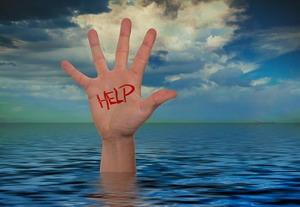 Connection is a challenge. I believe and experience that it all begins with respect. In my definition, respect is that deference to another person’s right to their path in life. They don’t need to see things my way or be my way. If who someone is and their way is not okay with me, then I can’t let them into my heart. If I want to change them to be my way, I am not embracing their truth and being. This is essential for connection. Positive regard for somebody helps build a better relationship with them. Still, it is not necessary to create a connection. Why is connection valuable? Connection is designed to develop mutual support. We are not intended to make it all alone in this life. We need support. We don’t need to like the plumber to respect his skills and accept his offer to repair our kitchen sink in exchange for what he wants — a big wad of cash. Respect allows for this mutually beneficial exchange in life. It is one of those adaptations that enhances our survival and ability to create the life we want. Respect builds that overlapping Goldilocks zone between connection and creation. It creates social health in our lives.
Connection is a challenge. I believe and experience that it all begins with respect. In my definition, respect is that deference to another person’s right to their path in life. They don’t need to see things my way or be my way. If who someone is and their way is not okay with me, then I can’t let them into my heart. If I want to change them to be my way, I am not embracing their truth and being. This is essential for connection. Positive regard for somebody helps build a better relationship with them. Still, it is not necessary to create a connection. Why is connection valuable? Connection is designed to develop mutual support. We are not intended to make it all alone in this life. We need support. We don’t need to like the plumber to respect his skills and accept his offer to repair our kitchen sink in exchange for what he wants — a big wad of cash. Respect allows for this mutually beneficial exchange in life. It is one of those adaptations that enhances our survival and ability to create the life we want. Respect builds that overlapping Goldilocks zone between connection and creation. It creates social health in our lives.
 While Mother’s Day celebrates the creative glory of motherhood, it also celebrates that connecting capacity that a mother has for her child. The birth of a child and the connection that forms is the most perfect union of creation and connection we have ever experienced. The rest of our life often becomes an attempt to recreate that beautiful balance between the independent, creative mothering energy and the bonded oneness of a mother’s love. Those moments in time form a template for what we seek in life. We want that courageous independence in our identity. Still, we also want the capacity to participate in mutually beneficial relationships with others to receive the support we need to manifest our independent goals. Both creation and connection are significant challenges in our lives, but getting both to work together is a lifelong lesson.
While Mother’s Day celebrates the creative glory of motherhood, it also celebrates that connecting capacity that a mother has for her child. The birth of a child and the connection that forms is the most perfect union of creation and connection we have ever experienced. The rest of our life often becomes an attempt to recreate that beautiful balance between the independent, creative mothering energy and the bonded oneness of a mother’s love. Those moments in time form a template for what we seek in life. We want that courageous independence in our identity. Still, we also want the capacity to participate in mutually beneficial relationships with others to receive the support we need to manifest our independent goals. Both creation and connection are significant challenges in our lives, but getting both to work together is a lifelong lesson.
 I have much to learn to find that harmonious balance, and folks I know well face the same challenge. However, it is a worthy challenge because the payoff is what some religions call self-realization. Manifesting both sides of your innate potential is about making all of you authentic – hence self-realization. It is poetic that our end goal is modeled in our first minutes of life. It puts a whole different spin on a Mother’s Day celebration.
I have much to learn to find that harmonious balance, and folks I know well face the same challenge. However, it is a worthy challenge because the payoff is what some religions call self-realization. Manifesting both sides of your innate potential is about making all of you authentic – hence self-realization. It is poetic that our end goal is modeled in our first minutes of life. It puts a whole different spin on a Mother’s Day celebration.
Take care,
David
Ellen
It’s Mother’s Day so naturally Ellen is working on a Mother’s Day card, in this case for my mother. It is nice to have an artist in the house. It adds a special flare to be able to give custom made cards on special occasions.
Spinal red light therapy
New research is showing that directly applying red light therapy over spinal cord injuries helps prevent nerve death, nerve damage, inflammation, and speed regeneration. Average nerve recovery increased from 18% without treatment to 45% with treatment using a 660 nm light.
“Let us not pray to be sheltered from dangers but to be fearless when facing them.”
~ Rabindranath Tagore
Fasting for liver disease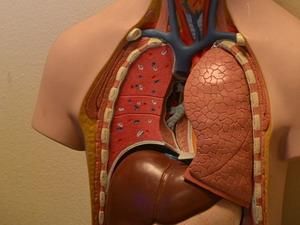
NAFLD or non-alcoholic fatty liver disease is a growing problem associated with metabolic disorders like obesity and diabetes and the use of pain killers like Tylenol. A recent trial has shown great improvement by having mice follow a 5:2 fasting program in which they eat normally for 5 days then fast for 2 days after they developed liver inflammation by following a standard western diet. Fasting only one day a week did not do nearly as well as fasting for 2 days each week.
“I slept and dreamt that life was joy. I awoke and saw that life was service. I acted and behold, service was joy. “
~ Rabindranath Tagore
Gut – brain axis treated with red light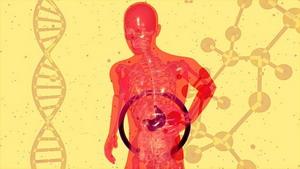
Evidence has been piling up that the gut greatly affects the brain and may cause depression and other psychological disorders. Stress affects both these areas and this new research is showing that treating both the brain and the gut with red light produces significant improvements.
“A mind all logic is like a knife all blade. It makes the hand bleed that uses it.”
~ Rabindranath Tagore
